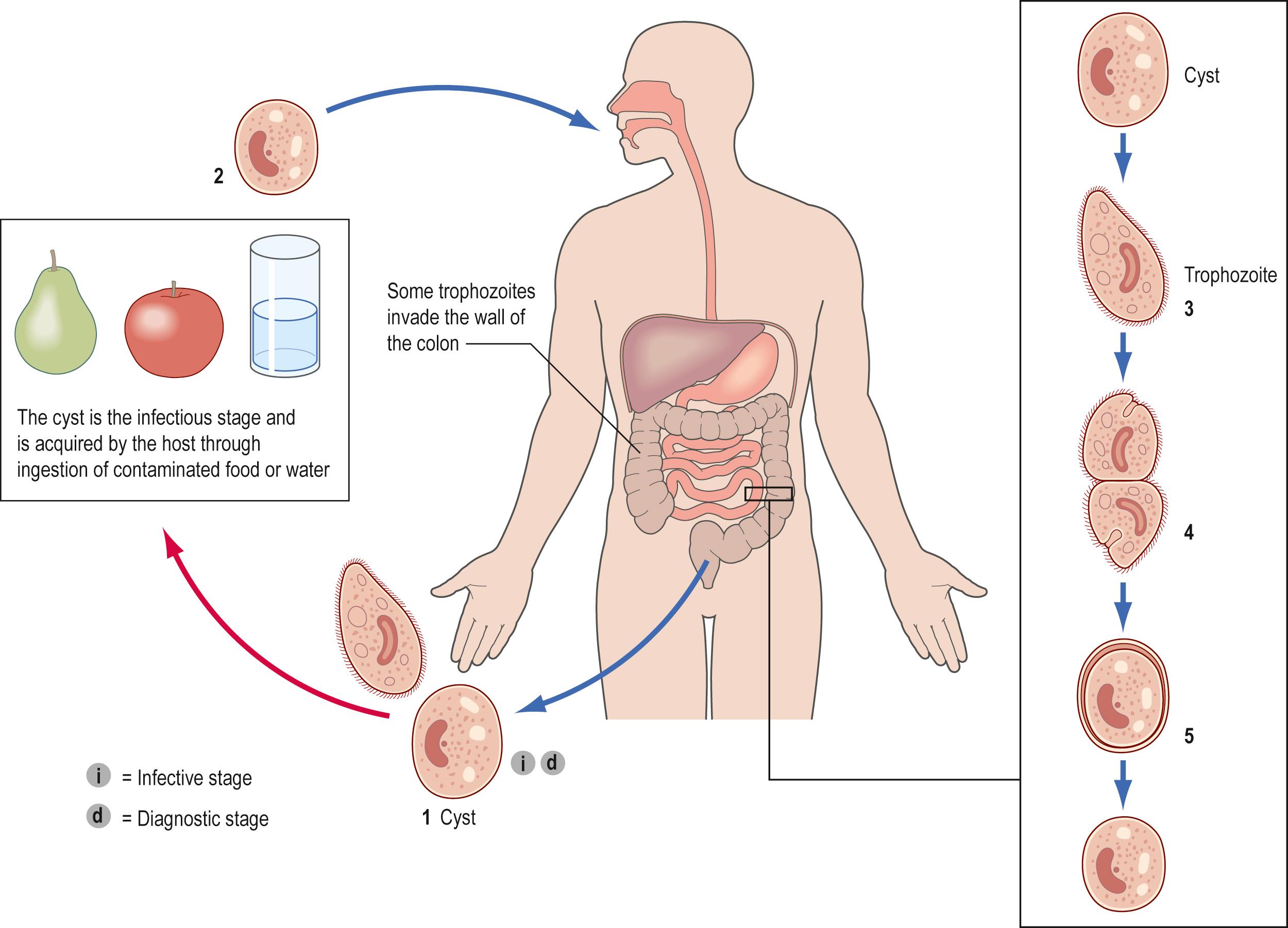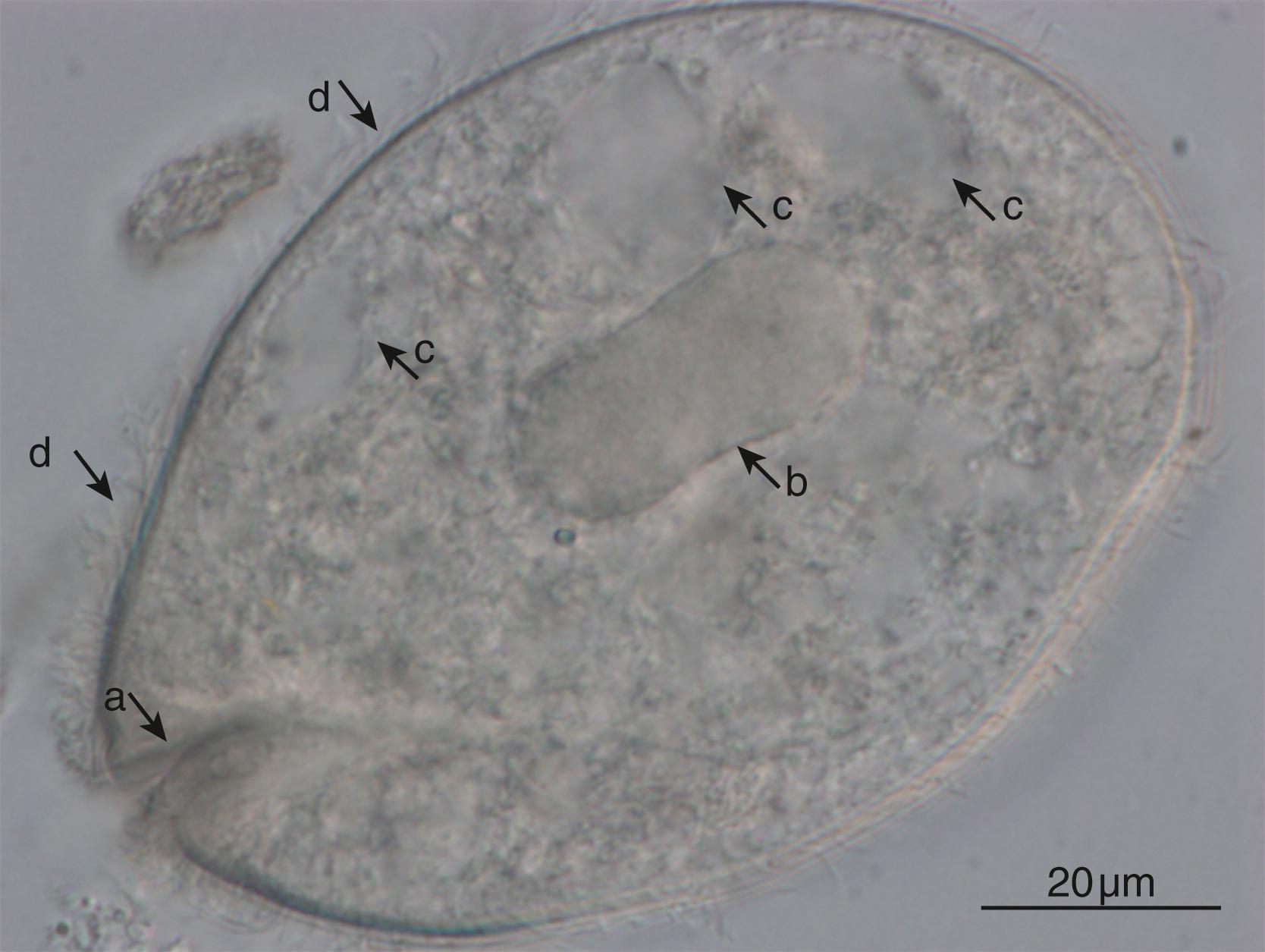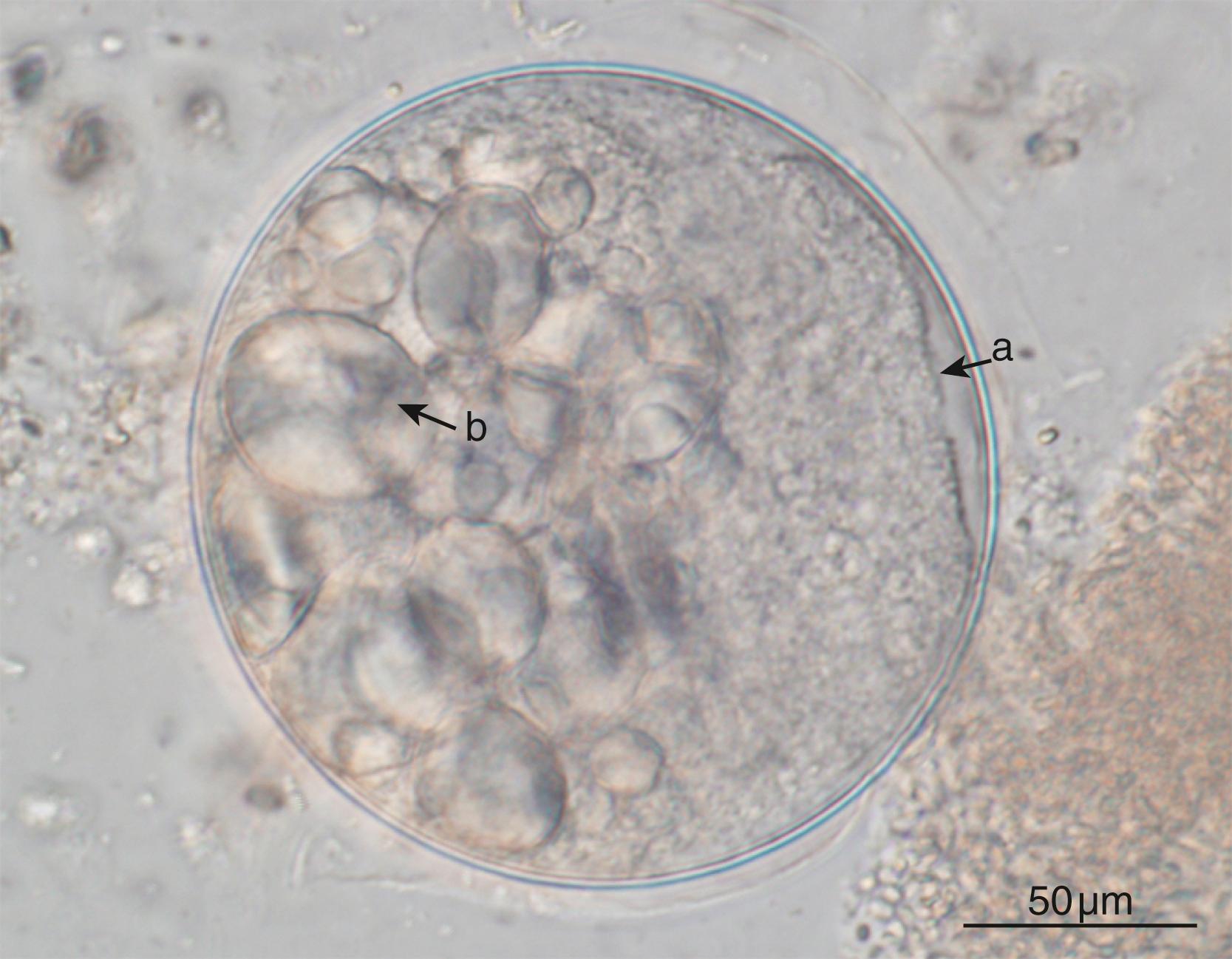Physical Address
304 North Cardinal St.
Dorchester Center, MA 02124
Balantioides coli originally was called Balantidium coli (synonym Neobalantidium coli ), but it has been renamed based on new phylogenetic observations. , This ciliate inhabits the intestine of several mammalian species, and it is the only ciliate known to infect humans. Balantiosis is considered a neglected zoonotic disease, and human clinical cases are typically associated with close contact with domestic pigs. Infected people can be symptom free or may develop symptoms ranging from mild diarrhea to fulminating dysentery.
The life cycle of B. coli comprises two stages: the motile trophozoite that inhabits the host’s hindgut and causes disease and the cyst that is environmentally resistant and is responsible for transmission between individuals ( Fig. 259.1 ). Trophozoites are large and ovoid, measuring 50–150 μm. The cytostome is visible at the anterior end of the body, and a kidney-shaped macronucleus and longitudinal cilia rows on the surface are often visible. The cytoplasm may contain ingested particles in contractile vacuoles such as erythrocytes, cell fragments, starch granules, or other debris ( Fig. 259.2 ). The cyst is spherical and thick-walled, with a size ranging between 40 and 60 μm and with a visible trophozoite inside. The cyst stage is commonly detected in pig feces but rarely in human or nonhuman primate feces where trophozoites are more likely to be present ( Fig. 259.3 ). , ,



Become a Clinical Tree membership for Full access and enjoy Unlimited articles
If you are a member. Log in here